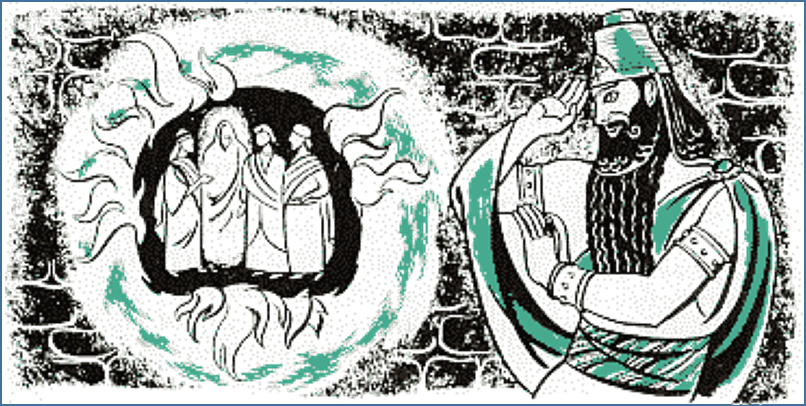
It’s an unlikely moment from a power-hungry pagan king, a moment that gives us great insight into the very nature of God and into long-asked questions about suffering.
We’re all familiar with the story in the book of Daniel of Shadrach, Meshach, and Abednego—the “three Hebrew children”—as they’ve come to be known. The events take place in the early years of Judah’s Babylonian exile. King Nebuchadnezzar asks for everyone to bow down to his golden image, threatening to throw the disobedient into the fiery furnace. Shadrach, Meshach, and Abednego have it in their spiritual DNA not to bow down to anything but God. They don’t bow down and their actions are reported to Nebuchadnezzar. Outraged, the king orders the fiery furnace to be cranked to seven times hotter than usual. He has the three Hebrew young men bound and thrown into the furnace.
Nebuchadnezzar then has that pivotal moment of seeing four men in the fire with Shadrach, Meshach, and Abednego. And they are all walking around, unbound, as if nothing is going on. He orders the men out of the fire and proclaims boldly that no one should speak against this God “for there is no other god who is able to rescue in this way.”
Most of my life I’ve focused on the first half of that decree, “for there is no other god who is able…” letting myself be drawn to the miraculous nature of the rescue, a miracle that impressed even good ol’ King Neb. But I’ve more recently noticed the last half of that decree, “…in this way,” and I’ve asked the question, “What ‘way’ might Nebuchadnezzar have been referring to?”
A number of possibilities come to mind:
- It certainly could have been the miraculous nature of the rescue, because, well…it was a pretty impressive and fascinating miracle.
- It could have been the last-second, buzzer-beater nature of the rescue. When it looked as though all was lost, God swooped in.
- But could Nebuchadnezzar have been referring to the fact that the God of Shadrach, Meshach, and Abednego actually jumped into the fire with the three young men?
While a fourth option of “all of the above” is likely, option three is what’s gotten my attention recently. Certainly Nebuchadnezzar had not seen any of his Babylonian gods do anything like that. And it fits exactly with God’s nature and one of the most prominent themes all through Scripture: He is with us.
In every era of the Old Testament there is a recurring scene of God inviting someone into His mission.** Think Moses, Gideon, King Saul, Jeremiah. In all cases God tapped them on the shoulder to invite them to His mission. Each potential leader threw out his own objections (can’t speak eloquently, tribe is insignificant, I’m too small, I’m just a kid). And in every case, God responded with “I’ll be with you.”
This theme builds momentum as we head into the New Testament. One of Jesus’ most famous nicknames is Emmanuel, meaning “God with us.” Jesus’ entire ministry can be described as God rescuing us by jumping into the fire.
His presence with us in the fire is paramount over whether He takes us out of the fire. Even Shadrach, Meshach, and Abednego were content with God’s presence, saying to Nebuchadnezzar that God will deliver them out of the fire, “but even if he does not” they will still not worship his gods or his golden image.
The miraculous rescue really isn’t the point. It’s that God was in the fire with them.
We can certainly pray to be rescued from the fire, but to focus solely on the rescue is to miss the point. No matter what fire we have going on around us, no matter what kind of chaos, no matter what kind of anxiety-filled circumstances, we can rest in the truth that God is with us.
In our youth ministries, one of the biggest gifts we can give to our teens is the assurance that no matter what they are facing, God is with them. NOTHING can rescue them the way the presence of God can.
That’s a gift. His presence is a present.
**Download a teen devo of these scenes here!
View/share the vlog version of this blog here!